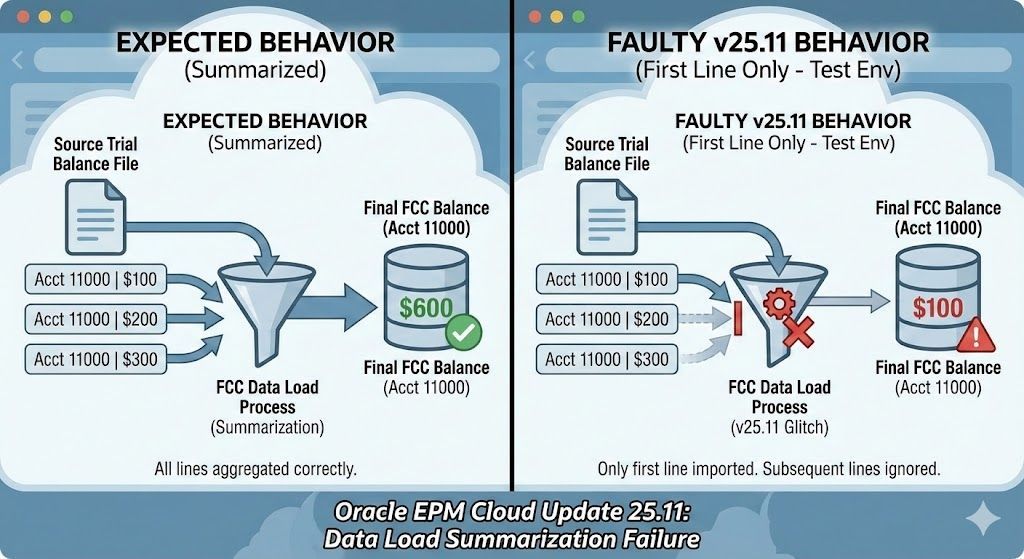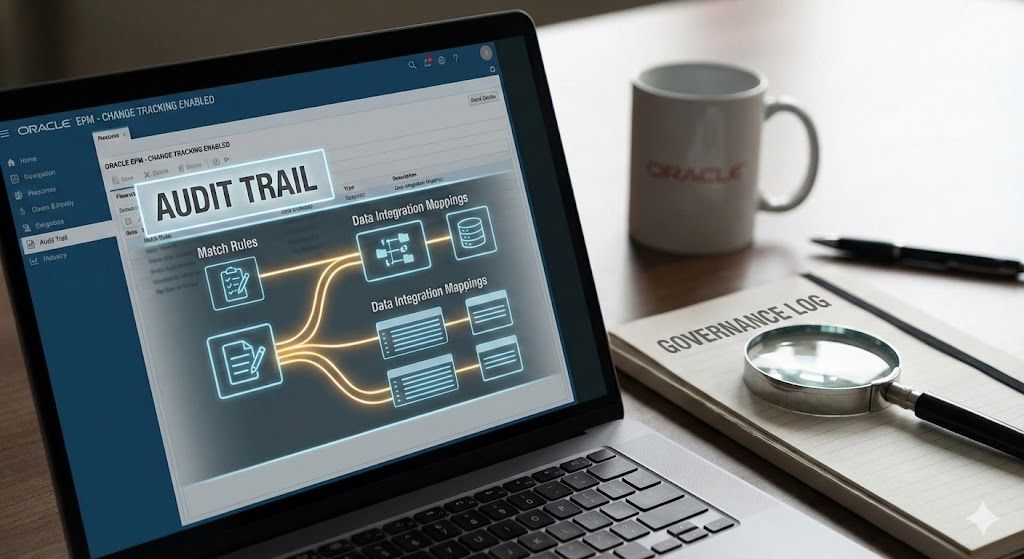Navigating the Journal Jungle in FCCS: Enterprise vs. Consolidation
Nadia Lodroman • 25 April 2025
Listen to Tresora and Ledgeron's chatting about this blog post:
Unraveling the Ledger: Enterprise Journals vs. Consolidation Journals in FCCS
Oracle FCCS (Financial Consolidation and Close Cloud Service) is a powerhouse for bringing your financial data together. But within its robust framework lie different types of journals, each with a specific purpose. Understanding the distinction between Enterprise Journals
and Consolidation Journals
is crucial for accurate and efficient consolidation. More importantly, knowing when not
to use them is just as vital! Let's demystify these journal types and highlight why your ERP remains the king of core accounting entries.
Enterprise Journals: Fine-Tuning at the Entity Level
Think of Enterprise Journals as the tools you use to make specific adjustments within a single entity in your consolidation structure. They operate at the local level, allowing you to address unique reporting needs or make necessary corrections after your initial data load from the ERP.
Main Functionality:
- Entity-Specific Adjustments: These journals are tied to a particular entity and impact only its balances.
- Post-Load Adjustments: They are typically used for adjustments needed after the trial balance data has been loaded from your source systems.
- Detailed Audit Trail: FCCS provides a clear audit trail of all Enterprise Journal entries, enhancing transparency and control at the entity level.
Use Cases for Enterprise Journals:
- Accruals and Deferrals: Recording period-end accruals (e.g., salaries, interest) or deferrals (e.g., prepaid expenses, unearned revenue) that might not be fully captured in the initial ERP data.
- Reclassifications within an Entity: Moving balances between accounts within the same legal entity for proper presentation (e.g., reclassifying a short-term portion of a long-term debt).
- Local GAAP Adjustments: Making adjustments required to align an entity's local statutory reporting with the group's accounting policies.
- Correction of Minor Data Load Issues: Addressing isolated, immaterial errors in the loaded data without requiring a full reload from the ERP (use with caution!).
Consolidation Journals: The Art of Group-Level Harmony
Consolidation Journals, on the other hand, operate at the consolidation level. They are the instruments used to perform the eliminations and adjustments necessary to present a true and fair view of the consolidated financial statements.
Main Functionality:
- Group-Level Impact: These journals affect the consolidated results, often involving multiple entities.
- Intercompany Eliminations: Eliminating balances arising from transactions between different entities within the group (e.g., intercompany receivables/payables, sales/purchases).
- Investment Eliminations: Removing the parent company's investment in subsidiaries and the corresponding subsidiary equity accounts.
- Consolidation Adjustments: Recording adjustments related to goodwill, fair value adjustments from acquisitions, and non-controlling interests.
- Currency Translation Adjustments (CTA): While often automated, specific CTA adjustments might be entered via Consolidation Journals.
Use Cases for Consolidation Journals:
- Eliminating Intercompany Debt and Equity: Ensuring that intra-group transactions don't inflate the consolidated balance sheet.
- Recognizing Goodwill and Other Acquisition-Related Adjustments: Accounting for the premium paid over the fair value of net assets acquired.
- Adjusting for Non-Controlling Interests: Allocating the portion of a subsidiary's equity not owned by the parent company.
The Golden Rule: ERP First, FCCS Second (for Core Accounting)
This brings us to a critical point: Enterprise Journals in FCCS should NOT be used as a replacement for your core journal entry process within your ERP system.
Think of it this way:
Your ERP is the primary ledger where the vast majority of your day-to-day financial transactions should be recorded, with robust controls and workflows. FCCS then intelligently consolidates this data. Enterprise Journals are for those specific, often non-recurring, adjustments needed at the entity level after
the initial data load.
Expanding the Horizon: Leveraging Enterprise Journals Beyond Consolidation
Interestingly, the power and control offered by Enterprise Journals aren't limited solely to the consolidation process within FCCS. This functionality can be strategically extended to enhance other EPM business processes, such as:
- Account Reconciliation: Imagine using Enterprise Journals within the Account Reconciliation Cloud Service (ARCS) to record reconciling items with robust supporting documentation and approvals. This provides a controlled and auditable way to manage and track adjustments identified during the reconciliation process. Instead of relying on spreadsheets or manual tracking, these "reconciliation journals" benefit from the built-in workflow and audit capabilities of the EPM platform.
- Tax Reporting: Similarly, in Tax Reporting Cloud Service (TRCS), Enterprise Journals can be invaluable for recording tax adjustments, provisions, and deferred tax entries with proper documentation and review. This provides a more controlled and transparent approach compared to managing these complex entries outside of the dedicated tax reporting system.
By leveraging the Enterprise Journal functionality in these adjacent EPM processes, organisations can benefit from:
- Enhanced Control and Auditability: Similar to their use in FCCS, these journals provide a clear audit trail and enforce defined workflows.
- Improved Data Governance: Centralizing adjustment entries within the EPM platform improves data consistency and governance across different financial processes.
- Streamlined Processes: Integrating adjustment entries directly within the reconciliation and tax reporting workflows reduces manual effort and improves efficiency.
Conclusion: Embrace the Purpose of Each Journal Type
In conclusion, mastering the distinction between Enterprise and Consolidation Journals in FCCS is essential for a smooth and accurate consolidation process. Remember that your ERP is the foundation for your core accounting entries. Enterprise Journals are powerful tools for specific entity-level adjustments after data loading, and their utility can be extended to enhance control and efficiency in other EPM processes like Account Reconciliation and Tax Reporting. By understanding the intended purpose of each journal type, you can ensure data integrity, maintain strong controls, and ultimately achieve a more efficient and reliable financial close. Know your lane in the journal jungle!
Are you looking to streamline your financial close process and ensure data integrity in FCCS? Contact us today for a consultation on how we can help.






